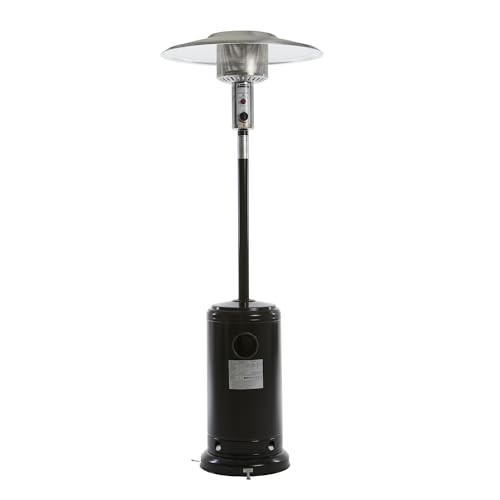9 Signs You're A Buy Gas Radiant Heaters Expert
Buying Gas Radiant Heaters: A Comprehensive Guide
Gas radiant heaters have gained appeal over the last few years for their performance and ability to offer instantaneous warmth. As more property owners and companies try to find methods to keep their spaces comfortable, comprehending the features, benefits, and considerations when purchasing these heating systems can be very informative. This short article dives into the intricacies of gas radiant heaters, helping possible buyers in making notified choices.
What are Gas Radiant Heaters?
Gas radiant heaters are devices that utilize propane or gas to give off heat straight into a space. Rather than heating the air, they warm objects and people in their area, offering convenience quicker and effectively. These heaters are popular for both indoor and outdoor settings due to their adaptability and effectiveness.
Key Features of Gas Radiant Heaters
- Direct Heating: Unlike conventional heaters that warm the air, gas radiant heaters offer direct warmth, making them an efficient choice for rapidly warming up areas.
- Portability: Many models are available as portable units, enabling them to be easily moved from one area to another.
- Fuel Variety: Gas radiant heaters can be powered by gas or propane, providing users versatility based upon schedule and preference.
- Adjustable Settings: Most gas radiant heaters come with adjustable heat settings, enabling users to tailor the level of warmth based on their needs.
Benefits of Gas Radiant Heaters
- Energy Efficiency: These heaters convert gas into heat effectively, leading to lower utility costs compared to electric heaters.
- Quick Heating: Radiant heat is felt practically instantly, making these heaters ideal for sudden temperature drops.
- Low Maintenance: Gas radiant heaters usually need less maintenance than electric designs, making them a problem-free alternative.
- Ecologically Friendly: When powered by tidy natural gas, these heaters can be a more environmentally sustainable option compared to other heating techniques.
Kinds Of Gas Radiant Heaters
When it pertains to selecting a gas radiant heater, it's vital to understand the different types available. Below are the most typical options:
- Indoor Gas Radiant Heaters: Designed for indoor areas, these heaters are typically vented or unvented and typically come with built-in security features.
- Outdoor Gas Radiant Heaters: Commonly used in outdoor patios or outdoor dining areas, these heaters are designed to withstand the components.
- Wall-Mounted Gas Radiant Heaters: A space-saving choice, these systems are ideal for smaller sized spaces and can be outfitted with different heat outputs depending on the location's needs.
- Freestanding Gas Radiant Heaters: These portable designs can be utilized in different areas, perfect for those who need versatility.
Purchasing Guide: How to Choose the Right Gas Radiant Heater
When purchasing a gas radiant heater, a number of factors should be thought about to ensure you pick the ideal model for your space:
1. Heating Capacity
- Measured in BTUs (British Thermal Units), the heater's capability identifies how much area it can effectively warm. Purchasers need to assess their particular requirements based on room size.
Room Size (sq feet)
Recommended BTUs (for Gas Radiant Heaters)
100 – 200
5,000 – 10,000 BTUs
200 – 400
10,000 – 20,000 BTUs
400 – 600
20,000 – 30,000 BTUs
600 – 800
30,000+ BTUs
2. Kind of Gas
- Consider whether you will be using propane or gas, as various heaters accommodate various fuel types.
3. Safety Features
- Look for designs equipped with safety functions such as automated shut-off valves, tip-over defense, and oxygen deficiency sensing units.
4. Installation Requirements
- Some heaters might need professional setup, especially vented designs. Be sure to think about the costs and requirements connected with installation.
5. Mobility
- If versatility is necessary, consider portable models that can be easily moved from one area to another.
Setup and Maintenance
Gas radiant heaters are generally uncomplicated to set up, specifically portable designs. Nevertheless, vented options might demand professional installation to ensure they satisfy regional security codes.
Maintenance typically involves:
- Regular cleaning to prevent dust accumulation.
- Checking gas connections and fittings for leakages.
- Ensuring security features are functional.
Idea: Regular checks around the system can help extend its life-span and preserve safety.
Frequently Asked Questions (FAQs)
Q1: Are gas radiant heaters safe for indoor use?A1: Yes
, as long as they are effectively vented and equipped with needed safety features, they can be safely used indoors.
**Q2: Can gas radiant heaters be used in enclosed spaces?A2: Unvented gas heaters can position risks in enclosed spaces due to prospective suffocation or carbon monoxide accumulation. Always ensure enough ventilation. Q3: How do I know what size heater I need? visit the next post : The proper size depends on the area you intend to heat. Refer to the BTU chart
above to identify your needs. Q4: What is the difference between propane and gas heaters?A4: The primary difference depends on their energy source
**; propane is delivered by means of tanks, while gas is normally piped into homes. Q5: How can I maximize efficiency?A5: Ensure the heater is appropriately sized for your space, preserve it frequently, and think about using it in combination
**with other heating approaches for optimum convenience. Gas radiant heaters can be a great addition to any home or business, offering energy-efficient and fast heating solutions. By understanding the various types, features, and factors to consider
when purchasing, buyers can make educated choices that meet their heating requires. With the ideal option, these heaters offer convenience, reliability, and a welcoming environment throughout chillier seasons.  ******
******